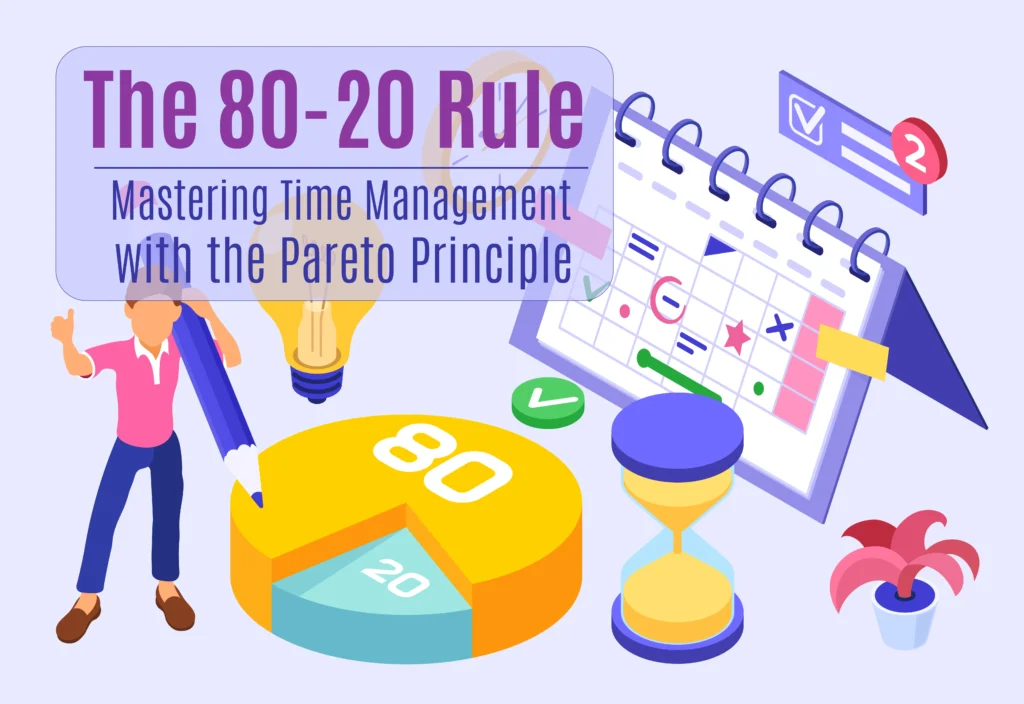How to Use the 2-Minute Rule to Avoid Procrastination
Do you ever find yourself putting off small tasks, even when they’d only take a moment to complete? Procrastination often creeps in with the simplest things, creating unnecessary stress and clutter in our lives. Enter the 2-Minute Rule—a game-changing technique designed to help you avoid procrastination and take immediate action. This simple yet powerful rule can transform the way you approach tasks, helping you build momentum, stay productive, and feel accomplished every day.
The 2-Minute Rule is a time management strategy that helps you get started with tasks immediately, rather than delaying them. By committing to spend just two minutes on a task, you reduce the mental resistance to starting it. Once you begin, you often find that momentum builds and it becomes easier to continue. In this blog post, we’ll explore how the 2-Minute Rule works, why it’s effective, and how you can apply it to avoid procrastination and improve productivity.

Introduction: What is the 2-Minute Rule?
The 2-Minute Rule is a productivity hack introduced by David Allen in his book Getting Things Done. The premise is simple: if a task takes less than two minutes to complete, do it immediately. This prevents small tasks from piling up and becoming overwhelming.
For larger tasks, the rule is slightly modified: spend at least two minutes working on the task. The idea is to get started, no matter how small the step. Once you begin, you’ll often find it easier to continue working on the task. The rule works because the hardest part of any task is usually starting it. The 2-Minute Rule removes the psychological barrier by making the first step so small that it’s hard to avoid.
The Science Behind the 2-Minute Rule
How Procrastination Affects Productivity
Procrastination is a common struggle, and it can have a significant impact on productivity. When we procrastinate, we often spend time doing low-value activities, avoiding the important work that needs our attention. This avoidance can create a cycle where the task becomes even more daunting over time. As the deadline approaches, stress builds, and the quality of the work often suffers.
At its core, procrastination is often a result of mental resistance. When a task feels overwhelming, the brain’s natural response is to avoid it, seeking easier or more enjoyable activities instead. The more we delay, the more intimidating the task seems. This is where the 2-Minute Rule comes into play. By reducing the task to its smallest possible form, the mental resistance is minimized, making it easier to take action.
Why Small Tasks Are Easier to Start
The psychology behind the 2-Minute Rule is based on the idea that small tasks are less intimidating and easier to tackle. When you commit to spending just two minutes on a task, it feels achievable, and your brain is less likely to resist it. Starting with a small action creates momentum, and once you’ve begun, it’s much easier to keep going.
This approach works because of something called the Zeigarnik Effect, which states that people are more likely to finish tasks they’ve already started. Once you take that initial step, your brain wants to complete the task, making it more difficult to stop. The key is to make the task seem so simple that starting it is no longer a big hurdle.
How the 2-Minute Rule Works
Breaking Large Tasks into Actionable Steps
One of the main reasons people procrastinate is that they view tasks as large, overwhelming projects. For example, writing a report or preparing for an exam can seem like a huge undertaking, leading to avoidance. The 2-Minute Rule helps by encouraging you to break down larger tasks into small, actionable steps.
Instead of thinking, “I need to write an entire report,” start by telling yourself, “I’m going to spend two minutes outlining the first section.” Once you start, you’ll likely find it easier to continue. By focusing on a small piece of the task, the job feels more manageable, and you’re less likely to avoid it.
Acting Immediately to Build Momentum
The power of the 2-Minute Rule lies in its ability to create momentum. Once you begin a task, the hardest part—starting—has already been accomplished. The brain responds to progress, and the feeling of accomplishment from completing a small step often motivates you to keep going.
For example, if you’ve been putting off cleaning your room, commit to spending just two minutes tidying one area. Once you’ve started, you’ll likely find yourself continuing for longer than planned. Even if you stop after two minutes, you’ve still made progress, which reduces the overall burden of the task.
Applying the 2-Minute Rule in Your Daily Life
Using the Rule for Everyday Tasks
The 2-Minute Rule can be applied to everyday tasks that often get delayed, such as:
- Answering emails: If an email will take less than two minutes to respond to, do it immediately. This prevents your inbox from becoming cluttered and overwhelming.
- Organizing: Spend two minutes tidying your workspace or organizing your files. Even a short burst of effort can help you stay organized over time.
- Making decisions: If you’ve been putting off a small decision, spend two minutes considering your options and make the call.
By addressing these small tasks immediately, you prevent them from piling up and becoming more stressful later on.
Tackling Larger Projects with the 2-Minute Rule
For larger projects, the 2-Minute Rule can be just as effective. Start by identifying a small, manageable task that can be completed in two minutes or less. For example:
- Studying: Instead of feeling overwhelmed by the need to study for hours, commit to two minutes of reviewing notes or flashcards. Once you start, you’re likely to keep going.
- Writing: If you’re working on a big writing project, spend two minutes drafting the first sentence or outlining the introduction. This small step often leads to greater progress.
- Exercise: Struggling to stay active? Commit to two minutes of stretching or doing a few push-ups. Often, once you’ve started, you’ll want to keep going.
The goal is to make the task small enough to feel easy, so there’s no mental resistance to getting started.
Benefits of Using the 2-Minute Rule
Reducing Mental Resistance and Overwhelm
One of the main benefits of the 2-Minute Rule is that it reduces mental resistance to starting tasks. By shrinking the size of the task, the brain no longer views it as overwhelming, making it easier to take action. This is especially helpful for tasks that seem large or difficult.
Additionally, using this rule helps prevent overwhelm. Instead of looking at the entire project and feeling paralyzed, you focus on one small piece at a time. This reduces stress and helps you stay on top of your workload without feeling buried by it.
Increasing Efficiency and Productivity
When applied consistently, the 2-Minute Rule can significantly improve efficiency and productivity. By handling small tasks immediately, you prevent them from accumulating and becoming a source of stress. This keeps your to-do list manageable and helps you maintain a steady workflow.
Moreover, starting tasks quickly creates momentum, allowing you to complete more in less time. Even if you don’t continue after the initial two minutes, you’ve made progress, which reduces the amount of work left to do later. Over time, this approach leads to greater overall productivity.
≫ Related Post: The 5 Types of Procrastinators and How to Deal with Each
Combining the 2-Minute Rule with Other Time Management Techniques
Integrating with Time-Blocking
The 2-Minute Rule works well in conjunction with time-blocking. Time-blocking involves setting aside specific periods of time to focus on certain tasks. By combining time-blocking with the 2-Minute Rule, you can ensure that both small and large tasks are effectively managed.
For example, during a time-block for checking emails, apply the 2-Minute Rule by responding immediately to any email that takes less than two minutes. For larger tasks within your time blocks, start with a two-minute action to build momentum, then continue for the full duration of the block.
Pairing with the Pomodoro Technique
The Pomodoro Technique, where you work for 25 minutes followed by a short break, can also be paired with the 2-Minute Rule. Use the 2-Minute Rule to get started on a task at the beginning of a Pomodoro session. This small commitment makes it easier to dive into focused work for the full 25 minutes.
Once the task has been started, the momentum created by the 2-Minute Rule will help carry you through the rest of the Pomodoro session, making it easier to stay focused and productive.
Overcoming Challenges When Using the 2-Minute Rule
Avoiding the Trap of Too Many Small Tasks
While the 2-Minute Rule is highly effective, there’s a potential pitfall: focusing too much on small tasks and neglecting more important, long-term projects. It’s essential to strike a balance between handling quick tasks immediately and dedicating time to larger, more impactful work.
To avoid this trap, use the 2-Minute Rule primarily as a way to get started on bigger tasks. Once you’ve used the rule to build momentum, shift your focus to the more significant work that requires longer, focused effort.
Staying Consistent and Building Habits
Consistency is key to making the 2-Minute Rule work long-term. The goal is to develop a habit of starting tasks immediately, rather than delaying them. One way to build consistency is to set reminders or cues that trigger you to apply the rule. For example, every time you sit down at your desk, commit to spending two minutes organizing your workspace or starting a task.
Over time, applying the 2-Minute Rule will become a natural part of your workflow, helping you avoid procrastination and stay productive throughout the day.
The Long-Term Impact of the 2-Minute Rule on Productivity and Focus
Building Momentum for Bigger Accomplishments
One of the most powerful effects of the 2-Minute Rule is its ability to build momentum. By consistently starting tasks, even in small increments, you’re able to achieve bigger accomplishments over time. Every task you complete, no matter how small, contributes to a sense of progress that motivates you to keep moving forward.
Over time, these small wins add up, leading to greater productivity and more significant achievements. What once seemed like a daunting project becomes manageable, thanks to the simple act of starting.
Strengthening Focus and Discipline
In addition to increasing productivity, the 2-Minute Rule helps strengthen focus and discipline. By committing to spend just two minutes on a task, you train yourself to focus quickly and efficiently. This habit of starting tasks immediately can carry over into other areas of life, improving your ability to concentrate on important work and stay disciplined in your approach.
With regular practice, the 2-Minute Rule becomes more than just a productivity tool—it becomes a mindset that encourages action and reduces procrastination.
Conclusion: Mastering the 2-Minute Rule to Overcome Procrastination
The 2-Minute Rule is a simple yet powerful technique for overcoming procrastination and boosting productivity. By breaking tasks down into small, manageable actions and starting immediately, you reduce mental resistance and build momentum for continued progress.
Whether you’re tackling everyday tasks or larger projects, applying the 2-Minute Rule can help you take control of your time, improve focus, and achieve more with less stress. Start today by applying the rule to a task you’ve been putting off—you’ll be surprised at how effective it can be.
















